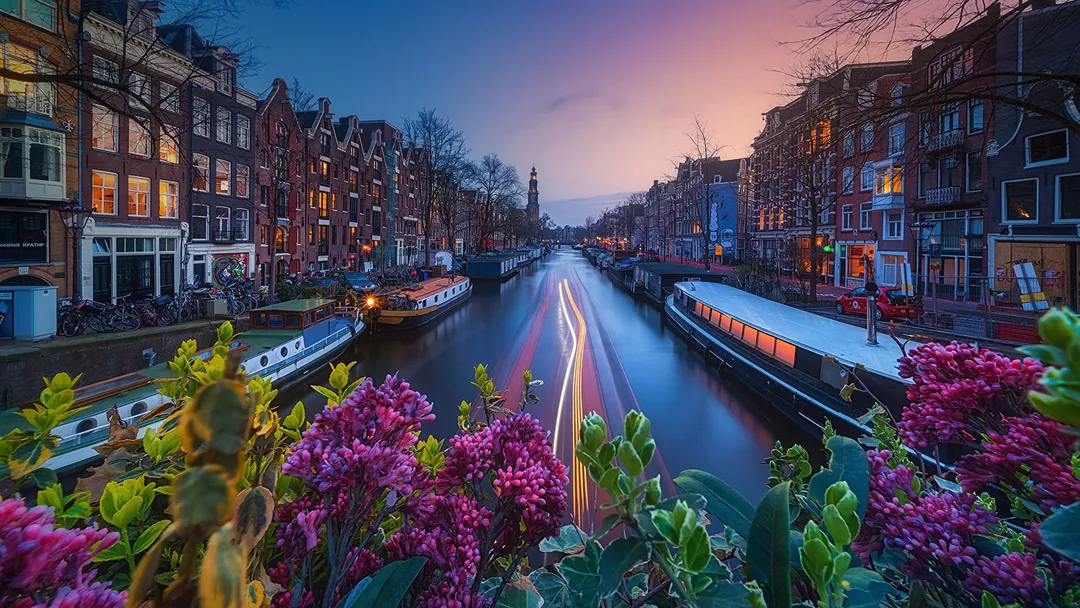Oguz Kaan Kısa · Feb. 5, 2021

The Netherlands impresses with its high living standards and student cities such as Amsterdam and Rotterdam. Today, the country, which has one of the largest economies in Europe, is a great education route not only with its universities with academic excellence but also with the job opportunities it offers to students after graduation. Let's take a look at some little-known facts about this beautiful country.
When we look at the average height of men in the world, it is seen that Dutch men come first with 184 cm. Dutch women are in second place on the world's tallest list with an average of 170cm. Some people believe this is a result of both DNA and high milk consumption.
Holland's famous beer brand Heineken has 140 factories worldwide and is the third largest beer producing brand in the world. It alone meets 50% of the country's production.
The tulips associated with the Netherlands are grown all over the country. If you want to see tulips, the peak blooms of tulips are between April 25 and May 5. Tulips were imported from the Ottoman Empire in the 16th century, and at the beginning of the 17th century they became very popular not only in the Netherlands but throughout Europe. The Netherlands has been ranked first among the countries that grow and export tulips in the world.
Most of the lands in the Netherlands are flat. About a quarter of the country and 21% of the population are below sea level; 50% of its land is 1 meter above sea level. Vaalserberg is the highest point in the Netherlands (in the European part) with a height of only 322.7 meters. Due to the flat terrain, about two-thirds of the Netherlands are at high risk of being affected by floods. Therefore, flood control is an important issue in the Netherlands. Complex drainage systems, canals and pumping stations (formerly windmills were used) keep the lowlands dry in order not to adversely affect settlement and agriculture, while embankments drawn into rivers prevent water from flowing into the country.
Windmills are a beloved symbol of the country. These mills literally made the country famous - without them, sufficient water and land drainage would not have been provided and the landscape of the Netherlands would be very different from today. There are 1180 ground mills in the Netherlands.
The Dutch continue to wear wooden clogs called "Klompen" since the middle ages. These clogs eventually became a part of Dutch culture. Today, although the people now wear normal leather shoes, these wooden clogs belonging to the Netherlands are sold in souvenir shops for tourists.
The Netherlands is also known as the Bicycle Land. Everyone rides a bike in this country, and there are bike lanes and bicycle parking spaces everywhere. Everyone has an average of 2-3 bikes. In the Netherlands, bicycles replace cars - and not just on the road! There are parking spaces reserved for bicycles even at train stations (Groningen station has 10,000 bike parking spaces). In addition, it is obligatory to have headlights on bicycles and it is illegal to use a bicycle while under the influence of alcohol.
Although the Dutch flag is red, white, and blue, orange is the country's national color because the kingdom comes from the House of Orange, who led the Dutch uprising against Spain. On the king's birthday - April 27 - the Dutch people wear orange outfits and celebrate this day with fun, picnics and walks.
The first compound microscope was made in the Netherlands in 1590. In the 1670s, Antoine van Leeuwenhoek, known as the "father of microbiology" studied and researched microbes. In 1898, Martinus Beijerinck showed that a disease can be caused by a factor that is smaller than a bacterium and which he calls 'virus'.
The Netherlands is one of the countries that can keep modern and traditional art together, from architecture to painting, from music to cinema. While there are many artists trained in the country until today, we remember Van Gogh as the painter who cut off his ear when we say Holland. However, once you enter the country, you will find much more: Rembrandt, Johannes Vermeer, Jan van Eyck, Hieronymus Bosch are just a few of them.
The Netherlands, the first country that comes to mind when it comes to gay rights and marriage in the world, is the first country to legalize same-sex marriage. The law entered into force on 1 April 2001.
De Drie Gezusters (three sisters), located in the Dutch city of Groningen, has the distinction of being Europe's largest pub with 10 different concepts, 5 different entrances, 20 bars and 3700 people capacity.

 Back
BackLet us find your dream university.
